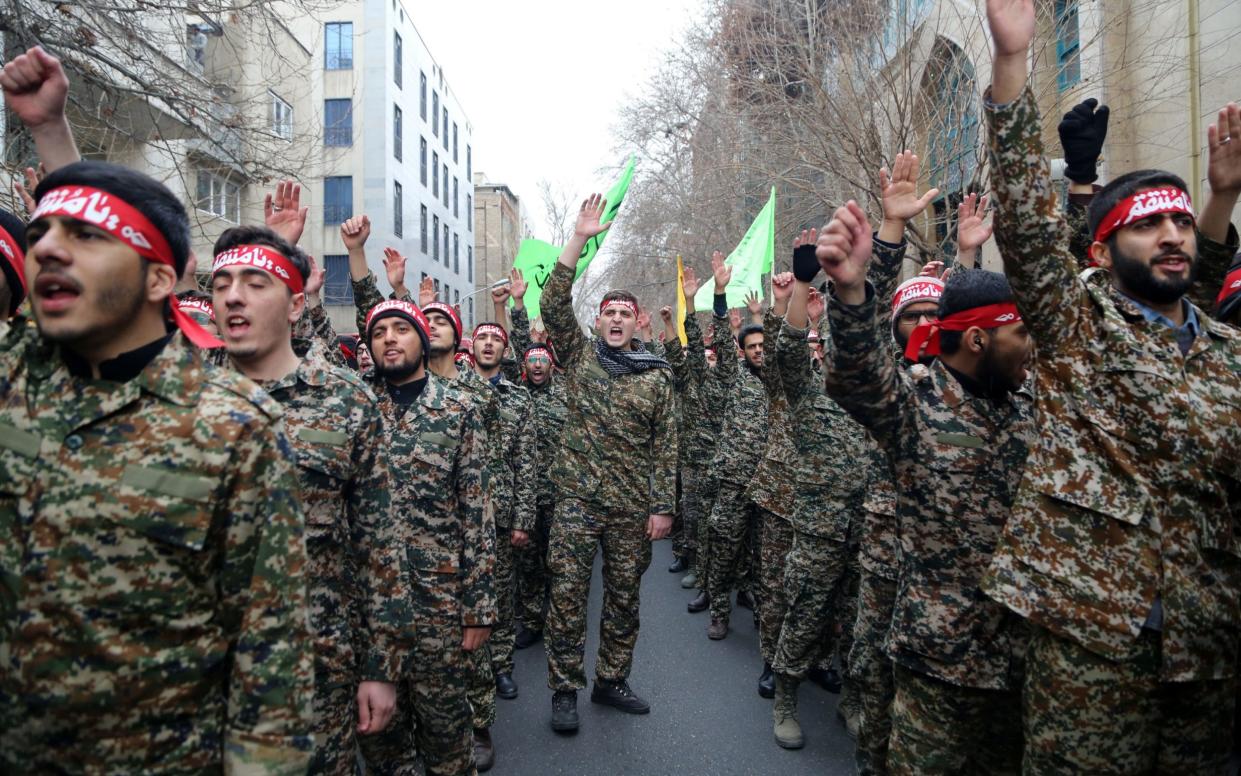With eyes of the world on Gaza, Iran’s ‘axis of resistance’ is quietly moving in for the kill

The Institute for the Study of War, a Washington think tank, has updated a web page called Israel-Hamas war (Iran updates) every day since the Oct 7 massacre in the south of Israel.
The page, essentially a diary, does not emote on the fighting itself (“because these activities are well-covered in Western media”) but coldly lists the activities of Hamas and all other Iranian-backed combatants in the region.
The picture that emerges is not the myopic one painted by TV news crews with their cameras fixed on Gaza, but of a wider battle plan laid out on a field commander’s table.
Shorne of the noise of war, you might think this less worrying. But the reverse is true.
The diary shows that, from the morning of Oct 7, well-equipped Iranian-backed militia have been moving, pincer-like, towards Israel’s borders.
“Twenty attacks from Lebanon into Israeli territory… Hezbollah recalling its cadres from abroad… clashes on the West Bank up by 470 per cent… Iranian-backed militias in Iraq hitting US troops … up to 500 Iraqi Popular Mobilisation Forces arrived in Syria and Lebanon…” – the list goes on and on.
Sima Shine, an Iran specialist who served as head of research at the intelligence division of Mossad, has not been a hawk by Israeli standards but is recalibrating her view now.
“There are those in Israel that think everything is Iran. I don’t belong to them. But unfortunately it might be that in some cases they were more correct than me,” she said.
Ms Shine added that it had been evident for more than a year that Iran was pulling together the disparate militias it funds across the Levant into a more cohesive and co-ordinated force; a force that Iran itself refers to as its “axis of resistance” or “resistance front”.
It has been shaped, said Ms Shine, by Esmail Qaani, the commander of Iran’s Quds Force, the division of its Revolutionary Guard Corps (IRGC) responsible for extra-territorial military and clandestine operations.

It is not just a matter of like-minded fanatics reading the tea leaves and acting broadly in unison but something more formal and strategic.
“They’ve created a war room in Beirut. They are meeting there the Palestinians, Hamas, Islamic Jihad and Hezbollah, and the IRGC. They were meeting in Lebanon and now also have a foothold in Syria in order to consolidate,” said Ms Shine.
“We see Qaani has been visiting all the time – Iraq, Syria, Lebanon; Iraq, Syria, Lebanon. Always organising.”
‘Focus on ground assaults’
At the same time, Iran has been pushing its proxies to focus on ground assaults of the sort staged by Hamas on Oct 7.
In an interview published on the Supreme Leader’s website in August last year, Major General Hossein Salami, the IRGC commander, called for ”infantry” in the West Bank to conduct more ground operations against Israeli security forces to stoke unrest.
“Missiles are excellent for deterrence or for waging static wars. [But] they do not liberate the lands,” he said.
To achieve the Palestinians’ long-stated goal of destroying Israel and supplanting it with a state of Palestine, they must move beyond isolated terrorist assaults and missile barrages.
As these groups now prepare themselves in Lebanon, Syria, the West Bank and Gaza, questions are being asked, not just about how Israeli intelligence misread Hamas’s intentions, but over what happens once the Israel Defense Forces (IDF) moves on Gaza. That move, which must surely happen in the next few days if Israeli voters are to be assuaged, could spark a much wider blaze in the region.
This will be the “first big test” of the “axis of resistance”, said Ms Shine. By Iran’s own account, “we’ll be facing a multi-dimensional war. It will not only be on one front but on multiple fronts”. The north, the south and the west.
Ms Shine said the misjudgment in the build-up to the Oct 7 attack was not a military one – many of Hamas’s preparations were observed in real time – but a political one.
Money was flowing into Gaza and living standards were improving.
“Everybody was happy with the concept of feed the beast and the beast would remain quiet,” she said. “That was the belief. And I admit it, I too was also believing that… But you know, this is the Western way of looking at life – and it’s a huge mistake”.
A similar conundrum now hangs over Israel’s response to the Oct 7 attack.
Wider conflagration
With cruise missiles already coming up the Red Sea from Yemen, rockets being fired from Lebanon and lethal clashes taking place on the West Bank, no one knows better than the IDF that the planned ground assault on Gaza could spark a much wider conflagration.
Yet Israel believes it has little choice but to move into Gaza and neutralise Hamas as a military force.
“We gave it a chance but we cannot allow it. You can’t live under the threat of a sword all the time from both fronts. We will have to take care in the northern arena one day. We can’t live like that. But first let’s eliminate this,” one senior Israeli security official was quoted as saying this week of the move to destroy Hamas in Gaza.
The US has sent two aircraft carrier battle groups to the eastern Mediterranean to provide “a strong signal of deterrence” to others who might be tempted to join the conflict.
Ms Shine said the carrier groups have long-range offensive capabilities but that the intention is that they are there as a deterrent; to draw a red line over the opening of a second front.
She hopes it will work but, once bitten, is now cautious.
“I don’t know if it will succeed,” she said. “If not, well… [Joe] Biden can be a huge surprise.”

 Yahoo News
Yahoo News 
